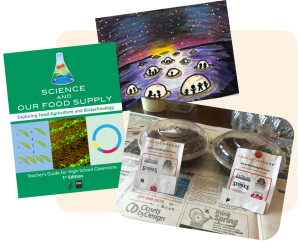Cavender’s Agricultural Career Guide
Designed for: Grades K-12
Learning Styles: Independent (student resource)
Resource Type: External Link
An Agricultural Career Guide: Jobs, Skills, and Resources Agriculture is the backbone of the United States and essential to keeping this country going. In addition to producing the food Americans need to survive, 10.5% of U.S. employment is related to agriculture and food production. This means that, as one of the hardworking few that feed the many, […]
Learn More
 This resource can stand alone to compliment your curriculum or compliment our
This resource can stand alone to compliment your curriculum or compliment our  This Resource is part of the
This Resource is part of the